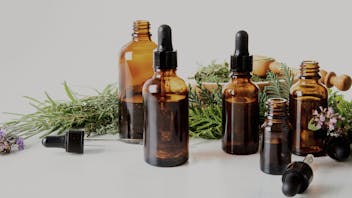Product Overview
Our high-quality Virginia Cedarwood is a beautiful dark reddish color with a rich, dry, oily-woody aroma that becomes drier and sweeter in the drydown. It does not have a strong typical "pencil" aroma that most Virginia Cedarwood oils have because it is not distilled from leftover wood from the pencil making industry, but rather from powdered wood (sawdust) from sawmills where the wood is cut for lumber.[1] Virginia Cedarwood, also known as red cedar or Eastern red cedar[2], essential oil is actually from a Juniper, Juniperus virginiana; however, the aroma is that of Cedar – woody and smooth, and reminiscent of an old cedarwood chest.
Because of Virginia Cedarwood oil’s fixative value, it is used extensively in the perfume industry, including the manufacture of soaps, room sprays, household products, etc.[3] If you’re looking for a suave, mellow, and complex cedar or wood note, this Virginia Cedarwood essential oil is well worth a sniff – and then some!
Please be aware when purchasing cedar essential oil. Atlas Cedarwood and Himalayan Cedarwood are the most notably used for aromatherapy, have a more balsamic aroma, and are the only true cedars typically available. Texas Cedarwood and Virginia Cedarwood are actually junipers and although quite useful, are different in aroma and effects. Also, Cedar Leaf oil (Thuja occidentalis, also known as American arborvitae, Eastern arborvitae, Eastern white cedar, swamp cedar, or Northern white cedar) is from a type of cypress that is best used very carefully or not at all due to its toxicity.[5]
1 Rhind, Jennifer Peace Rhind. Essential Oils – A Handbook for Aromatherapy Practice, 2nd ed., 2012, pp. 235-6.
2 Tisserand, Robert and Rodney Young. Essential Oil Safety, 2014, p. 240.
3 Arctander, Steffen. Perfume and Flavor Materials of Natural Origin, 1960, pp. 145-7.
4 Tisserand, Robert and Rodney Young. Essential Oil Safety, 2014, p. 448.
5 Rhind, Jennifer Peace Rhind. Essential Oils – A Handbook for Aromatherapy Practice, 2nd ed., 2012, p. 236.
6 Arctander, Steffen. Perfume and Flavor Materials of Natural Origin, 1960, pp. 145-7.
7 Price, Shirley and Len Price. Aromatherapy for Health Professionals, 2nd ed., 1999, p. 51.
8 Tisserand, Robert and Rodney Young. Essential Oil Safety, 2014, p. 240.



